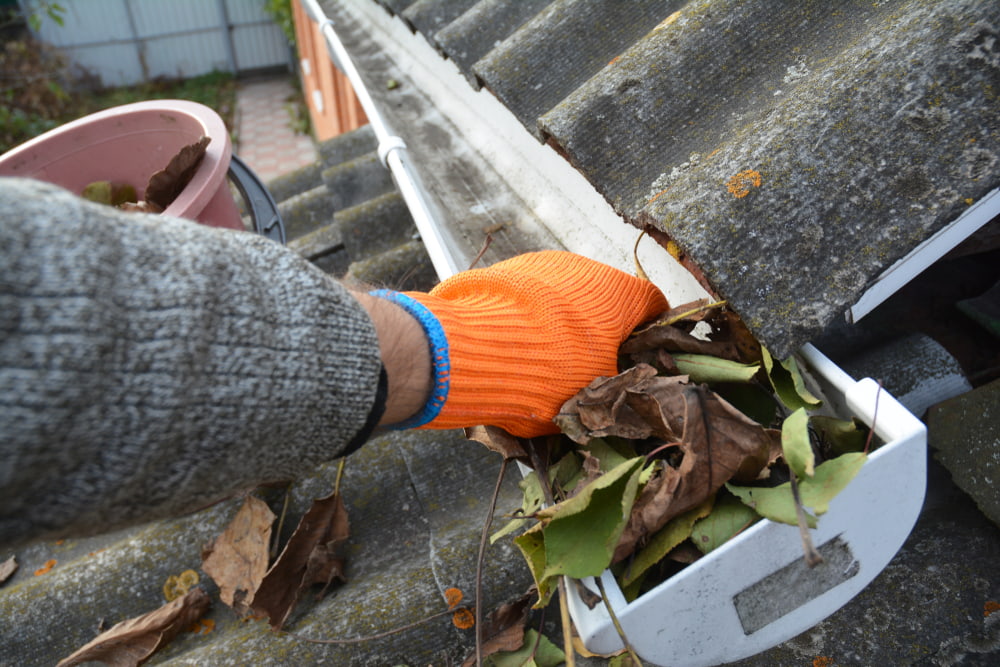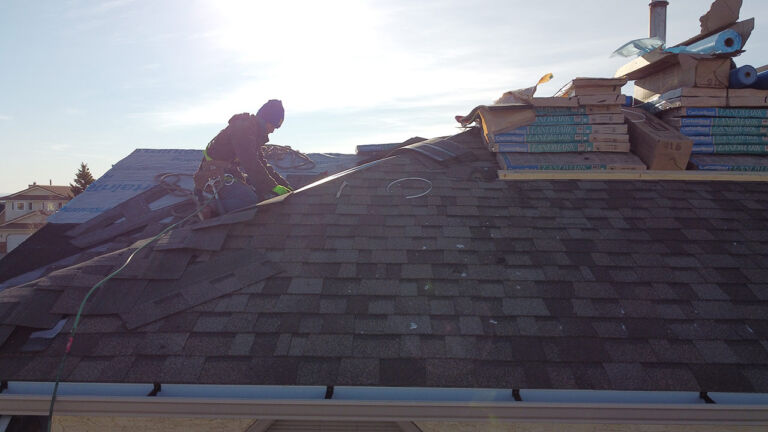
Your home’s gutters—or eavestroughs—are much more than an afterthought. They channel water away from your roof and foundation, preserving both structural integrity and aesthetic appeal of your home. With Calgary’s mix of snow, Chinooks, rain showers, and falling foliage, cleaning and maintaining your gutters isn’t just nice to do—it’s an essential part of home maintenance.
Let’s take a look at what happens when your gutters are ignored and what you can do to change that.
What Happens When Gutters Are Neglected
Pest Infestations & Critter Habitats
When gutters clog with leaves, twigs, or organic debris, they become ideal breeding grounds for insects, rodents, and birds. Pests like carpenter ants and termites can invade, causing structural damage to wood components—an expensive cleanup compared to the cost of routine maintenance.
System Damage & Sagging
Excess weight from debris or ice buildup can cause gutters to sag or detach, disrupting water flow and potentially leading to a full gutter replacement—often at a high cost. Save yourself the money and prioritize routine gutter cleaning and maintenance.
Water Damage to Home & Landscape
Overflowing gutters can cause water to seep into fascia boards, landscaping, basements, and foundations. That can lead to mould, mildew, rot, and interior leaks. Proper rainflow management protects both your home’s envelope and your valuable exterior plants.
The Long‑Term Value of Professional Gutter Cleaning
With the help of professional gutter cleaning and maintenance services in Calgary, your drainage system will function reliably and for the long haul. Professionals will clear blockages, inspect for damage, and help preserve your landscaping and foundation.
They’ll even spot early signs of wear, like sagging, detachment, or compromised sealant. Addressing these issues early on will help you avoid major system failures and costly replacements.
How to Clean & Maintain Your Gutters Safely
Whether you DIY or hire the pros, following safe, efficient practices is key. Here’s a step‑by‑step guide to keep you and your gutters operating:
1. Safety First
It’s fun to get up on the roof and see your neighbourhood, sprawling out in front of you. Before climbing up, always ensure that your ladder is set up on a stable surface, steady, and does not require you to step onto the second-to-last rung. We recommend having someone with you to spot you while you work.
2. Assemble Your Tools
You’ll need work gloves, a gutter scoop or small trowel, a brush or rag, a tarp or bucket for debris, and a hose with a spray nozzle. Knee pads are optional but helpful.
3. Remove Debris by Hand
Start near a downspout, scoop out leaves and compacted debris, and deposit material into a tarp or container. Disassemble and clean strainers if needed.
4. Flush the System
When the majority of debris has been cleared, attach a nozzle to your hose which allows you to spray with pressure. Spray down the gutters, with the stream always facing towards the downspout. Monitor for any new blockages and continue until the gutter is clear.
5. Check Your Downspouts
Blockages can sometimes occur inside your downspout, especially when the strainer is compromised. If you notice a low flow coming from your downspout, or if the quantity of water reaching the bottom is less than the water coming in, this is a sign that a blockage is occurring.
Spray directly down the spout with your hose. If this does not dislodge the blockage, a plumber’s snake may be necessary. Continue working until the water flows freely from the gutters to the downspout.
6. Inspect Your Gutters
Once clean, check for sagging, cracks, rust, or leaks. Seal joints using gutter sealant, treat mildew, and repaint if needed. Replace worn sections where appropriate.
This gutter cleaning and maintaining flow will help you prevent system failure, water damage, mould growth, and pest infestations.
Calgary-Specific Considerations
Calgary’s winter brings freeze-thaw cycles and snow-chinook patterns that make proper gutter care even more critical. Some Calgary-specific concerns to watch for include:
- Ice Dams: Blocked, debris-filled gutters encourage the formation of ice dams, which can damage fascia, roof edges, and the gutters themselves. Gutter guards reduce this risk by preventing large accumulations of snow and ice.
- Attic Venting Connections: Improperly vented attics can create condensation (attic rain) that disguises itself as a leak and can lead to ceiling stains, rot, and insulation damage. Proper ventilation combined with clean gutters is key.
Regular Gutter Cleaning & Maintenance Matters
To maintain your gutters and protect your roof, a consistent schedule is essential. At No Payne Roofing, we recommend having your gutters cleaned and maintained at least twice a year—typically spring and fall. Homes surrounded by trees or exposed to heavy rain may require gutter cleaning every 3 to 4 months.
For additional protection, gutter guards can reduce debris buildup and the frequency of maintenance, although they won’t eliminate the need entirely. They also help prevent ice dams during winter.
Having a trusted Calgary roofing and gutter company inspect your gutters can uncover early signs of damage, ensure proper installation, and help you avoid thousands in repair costs.
Call No Payne Roofing For Your Next Gutter Cleaning & Maintenance
As with any part of your home, regular roofing and gutter maintenance will maximize their efficiency and longevity. By regularly cleaning and maintaining your gutters, you’re not only preventing clogged channels—you’re protecting your home from pests, costly damage, landscape erosion, and winter-related failures. Whether you tackle the task yourself or rely on professional service, the right approach can ensure smooth water flow, structural resilience, and peace of mind.
For expert assistance in Calgary, contact No Payne Roofing. Our team of experts offers reliable full-service roofing, gutter maintenance and repair services.
FAQs
Is it worth cleaning your own gutters?
Yes—DIY cleaning can save money and let you identify issues early. However, for safely handling tall or hard-to-reach systems, professionals can handle the job easily and without the risk of damaging themselves or your home.
How often should gutters be cleaned?
We recommend having your gutters cleaned twice a year (spring and fall), but more frequently if your home has overhanging trees or sees heavy weather. Every 3 to 4 months may be necessary in such cases.
Are gutter guards worth the expense?
Yes—they significantly reduce debris and ice buildup, making gutter cleaning and maintaining easier and less frequent. They don’t replace maintenance entirely but offer long-term value.
What’s the difference between an eavestrough and a gutter?
There is no difference in function—”eavestrough” is commonly used in Canada, while “gutter” is more widely used elsewhere. Both serve to collect and redirect rainwater.





